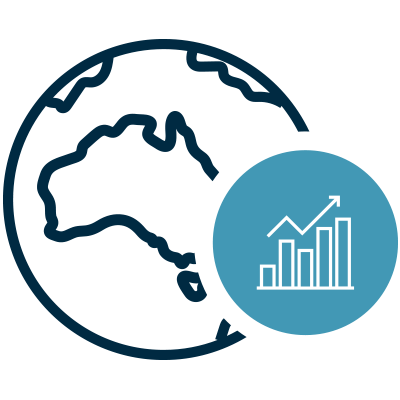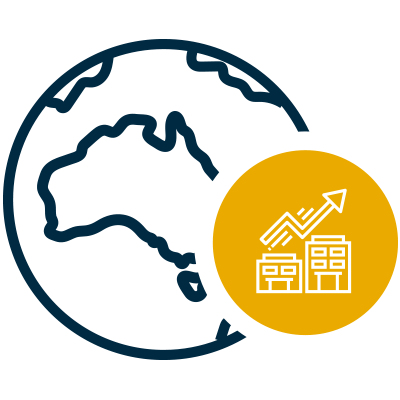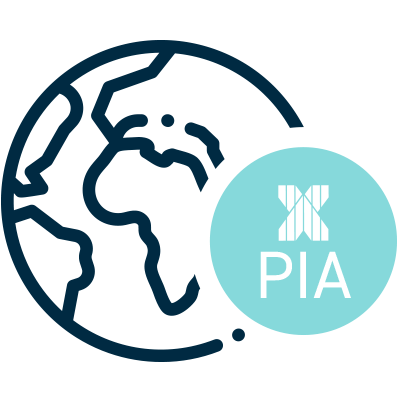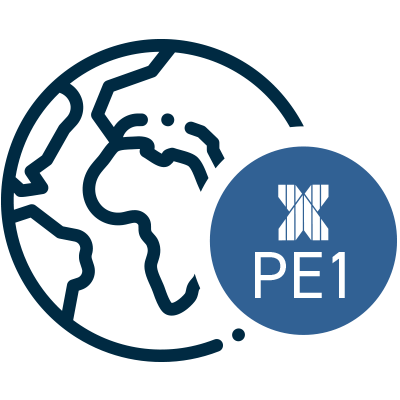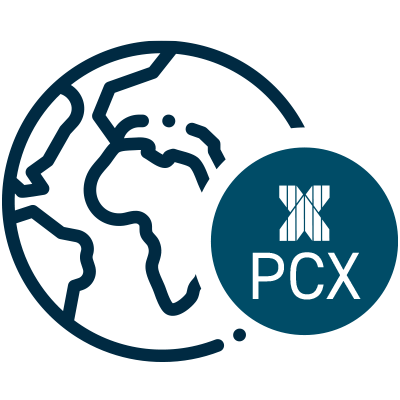https://data.pengana.com/wp-json/pen/performance?fund_code=PENSIF&date=30/09/2024&aggregation_code=Class%20A
Array
(
[0] => Array
(
[date] => 30/09/2024
[table] =>
[piechart] => Array
(
[0] => Array
(
[0] => Sector Breakdown
[1] => ["Consumer Discretionary", 0.027199507],["Health Care", 0.301152309],["Industrials", 0.312434022],["Information Technology", 0.233080156],["Materials", 0.104820531],["Utilities", 0.017864464],["Cash", 0.003449011],
)
[1] => Array
(
[0] => Capitalisation Breakdown
[1] => ["2-10bn", 0.187603508],["10-20bn", 0.096630553],[">20bn", 0.712316929],["Cash", 0.003449011],
)
[2] => Array
(
[0] => Region Breakdown
[1] => ["North America", 0.462009232],["Europe ex-UK", 0.351288355],["Japan", 0.062881646],["UK", 0.108869145],["Asia Pacific", 0.011502611],["Cash", 0.003449011],
)
[3] => Array
(
[0] => Custom Sector Breakdown
[1] => ["Health", 0.259425283],["Resource Efficiency", 0.261599745],["Sustainable Transport", 0.078525827],["Environmental Services", 0.083931704],["Water Management", 0.141398355],["Safety", 0.11270966],["Cleaner Energy", 0.04386132],["Education", 0.015099095],["Cash", 0.003449011],
)
)
[topholdings] => AUSUSD/Agilent Technologies Inc/United States/Health Care,AUIUSD/Autodesk Inc/United States/Information Technology,B28DTJ6/Bureau Veritas SA/France/Industrials,DHRUSD/Danaher Corp/United States/Health Care,ECLUSD/Ecolab Inc/United States/Materials,6490995/Keyence Corp/Japan/Information Technology,SCHEFR/Schneider Electric SE/France/Industrials,BFY8C75/STERIS PLC/United States/Health Care,THEUSD/Thermo Fisher Scientific Inc/United States/Health Care,B3P2CN8/Xylem Inc/NY/United States/Industrials,
[topholdingsimg] => https://data.pengana.com/wp-content/uploads/Stock-Icons/download-5-e1607921377179.png,https://data.pengana.com/wp-content/uploads/Autodesk-logo-e1644184012863.png,https://data.pengana.com/wp-content/uploads/bureau-veritas-sa_20210225140625.png,https://data.pengana.com/wp-content/uploads/download-10.png,https://data.pengana.com/wp-content/uploads/Stock-Icons/Ecolab_Logo.png,https://data.pengana.com/wp-content/uploads/Stock-Icons/keyence-vector-logo-e1607921289158.png,https://data.pengana.com/wp-content/uploads/Schneider_Electric_2007.svg.png,https://data.pengana.com/wp-content/uploads/Stock-Icons/STERIS-Logo-scaled.gif,https://data.pengana.com/wp-content/uploads/Stock-Icons/TMO_original.png,https://data.pengana.com/wp-content/uploads/Xylem_Logo.svg.png,
[topholdingsintro] => Array
(
[0] => Agilent Technologies is a specialist in the development and manufacture of bio-analytics for the life sciences and chemical analysis industries. The company's mission is to advance quality of life. Within healthcare, its analytical instruments are used in the development and testing of healthcare products. Agilent also has a chemical analysis business which makes equipment for monitoring levels of pollutants in the ambient environment and measuring contaminants in food and the human body
[1] => Autodesk is a global leader in 3D design and engineering software and services. Its products are used by architects, engineers and designers to design, develop and manufacture and operate a vast range of products, buildings and services. Autodesk tools are a critical component in the design and operation of more resource efficient products and buildings. The product brands include Autodesk 360 cloud services, AutoCAD civil 3D and LT, 3Ds Max, Maya, and Revit.
[2] => Bureau Veritas is a world leader in testing, inspection and certification (TIC). Its services and solutions help ensure clients meet standards and regulations covering quality, health and safety, environmental protection and social responsibility. It covers a very wide range of sectors including: Marine & Offshore, Agri-Food & Commodities, Industry, Buildings & Infrastructure, Consumer Products, and Certification.
[3] => Danaher is a diversified business that designs, manufactures and sells laboratory equipment, consumables and services to clinical and medical laboratories including microscopes, analytical software and imaging and molecular devices. These tools are used in the development of new drugs and for diagnosing critically ill patients.
[4] => Ecolab sells cleaning products and services to restaurants, hotels, hospitals, food and beverage producers and other businesses. The company has a particular focus on energy and water efficiency. Ecolab has developed a range of products and services that help to reduce, and in some cases even eliminate, the use of water in a wide range of industrial applications. In turn, this helps to lower costs through a reduction of energy and water impacts.
[5] => The company's products include machine visions systems such as sensors and measuring instruments that are primarily used in the automation of factories. These components help customers achieve higher levels of efficiency, energy-savings, improved material utilisation and reduced wastage and quality management.
[6] => Schneider Electric is a leading global provider of low- and medium-voltage electrical products and systems as well as automation control equipment. It specialises in digital automation and energy management, serving customers in the home, building and infrastructure industries. Its products and services promotes sustainability and energy efficiency through driving digital transformation in manufacturing processes and energy technologies.
[7] => Steris provides a variety of products and services to the healthcare industry including specifically to hospitals, medical device manufacturers, pharmaceutical and biotechnology businesses as well as for food safety and industrial markets. The company's main areas of activity are in providing hygiene, sterilisation and anti-microbial treatment services to these end markets in order to ensure a safe and hygienic operating environment.
[8] => Thermo Fisher Scientific is one of the largest suppliers of analytical instrument, equipment, consumables and software for healthcare and environmental research, analysis, discovery and diagnostics. The company offers a very wide range of products and services including the equipment needed to analyse samples as well as the variety of containers and other consumables needed to handle them.
[9] => Xylem manufactures a wide range of products and provides services to the water industry. The company's water infrastructure business provides a range of pumps, filtration and testing and treatment equipment to water utilities. The company also supplies commercial, residential markets with water and wastewater systems, and provides measurement and control solutions. Xylem's strategy is characterised by the application of intelligent technology to improve water efficiency, in products such as smart meters and intelligent monitoring equipment.
[10] =>
)
[pdfchart] => PD94bWwgdmVyc2lvbj0iMS4wIiBlbmNvZGluZz0iVVRGLTgiIHN0YW5kYWxvbmU9Im5vIj8+PHN2ZyB4bWxucz0iaHR0cDovL3d3dy53My5vcmcvMjAwMC9zdmciIGJvcmRlcj0iMCIgZGF0YS1hYy13cmFwcGVyLWlkPSIzMDAiIHdpZHRoPSIzMzAiIGhlaWdodD0iMTY1IiBjbGFzcz0iYW55Y2hhcnQtdWktc3VwcG9ydCIgYWMtaWQ9ImFjX3N0YWdlXzhiIiByb2xlPSJwcmVzZW50YXRpb24iIHN0eWxlPSJkaXNwbGF5OiBibG9jazsiPjxkZWZzPjxjbGlwUGF0aCBjbGlwLXJ1bGU9Im5vbnplcm8iIGlkPSJhY19jbGlwXzhxIj48cGF0aCBkYXRhLWFjLXdyYXBwZXItaWQ9IjMxOSIgaWQ9ImFjX3JlY3RfOHIiIGZpbGw9Im5vbmUiIHN0cm9rZT0iYmxhY2siIGQ9Ik0gMCAwIEwgMTgzLjEyODkwNjI1IDAgMTgzLjEyODkwNjI1IDE2IDAgMTYgMCAwIFoiLz48L2NsaXBQYXRoPjxjbGlwUGF0aCBjbGlwLXJ1bGU9Im5vbnplcm8iIGlkPSJhY19jbGlwXzh5Ij48cGF0aCBkYXRhLWFjLXdyYXBwZXItaWQ9IjMyNSIgaWQ9ImFjX3JlY3RfOHoiIGZpbGw9Im5vbmUiIHN0cm9rZT0iYmxhY2siIGQ9Ik0gNDggMjYgTCAzMjYgMjYgMzI2IDEzOCA0OCAxMzggNDggMjYgWiIvPjwvY2xpcFBhdGg+PGNsaXBQYXRoIGNsaXAtcnVsZT0ibm9uemVybyIgaWQ9ImFjX2NsaXBfOXkiPjxwYXRoIGRhdGEtYWMtd3JhcHBlci1pZD0iMzU5IiBpZD0iYWNfcmVjdF85eiIgZmlsbD0ibm9uZSIgc3Ryb2tlPSJibGFjayIgZD0iTSA0OSAyNiBMIDMyNSAyNiAzMjUgMTM2IDQ5IDEzNiA0OSAyNiBaIi8+PC9jbGlwUGF0aD48Y2xpcFBhdGggY2xpcC1ydWxlPSJub256ZXJvIiBpZD0iYWNfY2xpcF9hMyI+PHBhdGggZGF0YS1hYy13cmFwcGVyLWlkPSIzNjIiIGlkPSJhY19yZWN0X2E0IiBmaWxsPSJub25lIiBzdHJva2U9ImJsYWNrIiBkPSJNIDQ5IDI2IEwgMzI2IDI2IDMyNiAxMzcgNDkgMTM3IDQ5IDI2IFoiLz48L2NsaXBQYXRoPjxjbGlwUGF0aCBjbGlwLXJ1bGU9Im5vbnplcm8iIGlkPSJhY19jbGlwX2FhIj48cGF0aCBkYXRhLWFjLXdyYXBwZXItaWQ9IjM2NyIgaWQ9ImFjX3JlY3RfYWIiIGZpbGw9Im5vbmUiIHN0cm9rZT0iYmxhY2siIGQ9Ik0gNDkgMjYgTCAzMjYgMjYgMzI2IDEzNyA0OSAxMzcgNDkgMjYgWiIvPjwvY2xpcFBhdGg+PGNsaXBQYXRoIGNsaXAtcnVsZT0ibm9uemVybyIgaWQ9ImFjX2NsaXBfYWkiPjxwYXRoIGRhdGEtYWMtd3JhcHBlci1pZD0iMzczIiBpZD0iYWNfcmVjdF9haiIgZmlsbD0ibm9uZSIgc3Ryb2tlPSJibGFjayIgZD0iTSA0OCAyNiBMIDMyNSAyNiAzMjUgMTM3IDQ4IDEzNyA0OCAyNiBaIi8+PC9jbGlwUGF0aD48L2RlZnM+PGcgZGF0YS1hYy13cmFwcGVyLWlkPSIzMDEiIGlkPSJhY19sYXllcl84YyI+PGcgZGF0YS1hYy13cmFwcGVyLWlkPSIzMDYiIHJvbGU9ImFydGljbGUiIGFyaWEtbGFiZWw9ImxpbmUgY2hhcnQgLCB3aXRoIDIgbGluZSBzZXJpZXMsIC4gWS1zY2FsZSBtaW5pbXVtIHZhbHVlIGlzIDAgLCBtYXhpbXVtIHZhbHVlIGlzIDUwMDAwMC4gWC1zY2FsZSB3aXRoIDIyNiBjYXRlZ29yaWVzOiAzMC8xMi8yMDA1LCAzMS8wMS8yMDA2LCAyOC8wMi8yMDA2LCAzMS8wMy8yMDA2LCAyOC8wNC8yMDA2LCAzMS8wNS8yMDA2LCAzMC8wNi8yMDA2LCAzMS8wNy8yMDA2LCAzMS8wOC8yMDA2LCAyOS8wOS8yMDA2LCAzMS8xMC8yMDA2LCAzMC8xMS8yMDA2LCAyOS8xMi8yMDA2LCAzMS8wMS8yMDA3LCAyOC8wMi8yMDA3LCAzMC8wMy8yMDA3LCAzMC8wNC8yMDA3LCAzMS8wNS8yMDA3LCAyOS8wNi8yMDA3LCAzMS8wNy8yMDA3LCAzMS8wOC8yMDA3LCAyOC8wOS8yMDA3LCAzMS8xMC8yMDA3LCAzMC8xMS8yMDA3LCAzMS8xMi8yMDA3LCAzMS8wMS8yMDA4LCAyOS8wMi8yMDA4LCAzMS8wMy8yMDA4LCAzMC8wNC8yMDA4LCAzMC8wNS8yMDA4LCAzMC8wNi8yMDA4LCAzMS8wNy8yMDA4LCAyOS8wOC8yMDA4LCAzMC8wOS8yMDA4LCAzMS8xMC8yMDA4LCAyOC8xMS8yMDA4LCAzMS8xMi8yMDA4LCAzMC8wMS8yMDA5LCAyNy8wMi8yMDA5LCAzMS8wMy8yMDA5LCAzMC8wNC8yMDA5LCAyOS8wNS8yMDA5LCAzMC8wNi8yMDA5LCAzMS8wNy8yMDA5LCAzMS8wOC8yMDA5LCAzMC8wOS8yMDA5LCAzMC8xMC8yMDA5LCAzMC8xMS8yMDA5LCAzMS8xMi8yMDA5LCAyOS8wMS8yMDEwLCAyNi8wMi8yMDEwLCAzMS8wMy8yMDEwLCAzMC8wNC8yMDEwLCAzMS8wNS8yMDEwLCAzMC8wNi8yMDEwLCAzMC8wNy8yMDEwLCAzMS8wOC8yMDEwLCAzMC8wOS8yMDEwLCAyOS8xMC8yMDEwLCAzMC8xMS8yMDEwLCAzMS8xMi8yMDEwLCAzMS8wMS8yMDExLCAyOC8wMi8yMDExLCAzMS8wMy8yMDExLCAyOS8wNC8yMDExLCAzMS8wNS8yMDExLCAzMC8wNi8yMDExLCAyOS8wNy8yMDExLCAzMS8wOC8yMDExLCAzMC8wOS8yMDExLCAzMS8xMC8yMDExLCAzMC8xMS8yMDExLCAzMC8xMi8yMDExLCAzMS8wMS8yMDEyLCAyOS8wMi8yMDEyLCAzMC8wMy8yMDEyLCAzMC8wNC8yMDEyLCAzMS8wNS8yMDEyLCAyOS8wNi8yMDEyLCAzMS8wNy8yMDEyLCAzMS8wOC8yMDEyLCAyOC8wOS8yMDEyLCAzMS8xMC8yMDEyLCAzMC8xMS8yMDEyLCAzMS8xMi8yMDEyLCAzMS8wMS8yMDEzLCAyOC8wMi8yMDEzLCAyOC8wMy8yMDEzLCAzMC8wNC8yMDEzLCAzMS8wNS8yMDEzLCAyOC8wNi8yMDEzLCAzMS8wNy8yMDEzLCAzMC8wOC8yMDEzLCAzMC8wOS8yMDEzLCAzMS8xMC8yMDEzLCAyOS8xMS8yMDEzLCAzMS8xMi8yMDEzLCAzMS8wMS8yMDE0LCAyOC8wMi8yMDE0LCAzMS8wMy8yMDE0LCAzMC8wNC8yMDE0LCAzMC8wNS8yMDE0LCAzMC8wNi8yMDE0LCAzMS8wNy8yMDE0LCAyOS8wOC8yMDE0LCAzMC8wOS8yMDE0LCAzMS8xMC8yMDE0LCAyOC8xMS8yMDE0LCAzMS8xMi8yMDE0LCAzMC8wMS8yMDE1LCAyNy8wMi8yMDE1LCAzMS8wMy8yMDE1LCAzMC8wNC8yMDE1LCAyOS8wNS8yMDE1LCAzMC8wNi8yMDE1LCAzMS8wNy8yMDE1LCAzMS8wOC8yMDE1LCAzMC8wOS8yMDE1LCAzMC8xMC8yMDE1LCAzMC8xMS8yMDE1LCAzMS8xMi8yMDE1LCAyOS8wMS8yMDE2LCAyOS8wMi8yMDE2LCAzMS8wMy8yMDE2LCAyOS8wNC8yMDE2LCAzMS8wNS8yMDE2LCAzMC8wNi8yMDE2LCAyOS8wNy8yMDE2LCAzMS8wOC8yMDE2LCAzMC8wOS8yMDE2LCAzMS8xMC8yMDE2LCAzMC8xMS8yMDE2LCAzMC8xMi8yMDE2LCAzMS8wMS8yMDE3LCAyOC8wMi8yMDE3LCAzMS8wMy8yMDE3LCAyOC8wNC8yMDE3LCAzMS8wNS8yMDE3LCAzMC8wNi8yMDE3LCAzMS8wNy8yMDE3LCAzMS8wOC8yMDE3LCAyOS8wOS8yMDE3LCAzMS8xMC8yMDE3LCAzMC8xMS8yMDE3LCAyOS8xMi8yMDE3LCAzMS8wMS8yMDE4LCAyOC8wMi8yMDE4LCAyOS8wMy8yMDE4LCAzMC8wNC8yMDE4LCAzMS8wNS8yMDE4LCAyOS8wNi8yMDE4LCAzMS8wNy8yMDE4LCAzMS8wOC8yMDE4LCAyOC8wOS8yMDE4LCAzMS8xMC8yMDE4LCAzMC8xMS8yMDE4LCAzMS8xMi8yMDE4LCAzMS8wMS8yMDE5LCAyOC8wMi8yMDE5LCAyOS8wMy8yMDE5LCAzMC8wNC8yMDE5LCAzMS8wNS8yMDE5LCAyOC8wNi8yMDE5LCAzMS8wNy8yMDE5LCAzMC8wOC8yMDE5LCAzMC8wOS8yMDE5LCAzMS8xMC8yMDE5LCAyOS8xMS8yMDE5LCAzMS8xMi8yMDE5LCAzMS8wMS8yMDIwLCAyOC8wMi8yMDIwLCAzMS8wMy8yMDIwLCAzMC8wNC8yMDIwLCAyOS8wNS8yMDIwLCAzMC8wNi8yMDIwLCAzMS8wNy8yMDIwLCAzMS8wOC8yMDIwLCAzMC8wOS8yMDIwLCAzMC8xMC8yMDIwLCAzMC8xMS8yMDIwLCAzMS8xMi8yMDIwLCAyOS8wMS8yMDIxLCAyNi8wMi8yMDIxLCAzMS8wMy8yMDIxLCAzMC8wNC8yMDIxLCAzMS8wNS8yMDIxLCAzMC8wNi8yMDIxLCAzMC8wNy8yMDIxLCAzMS8wOC8yMDIxLCAzMC8wOS8yMDIxLCAyOS8xMC8yMDIxLCAzMC8xMS8yMDIxLCAzMS8xMi8yMDIxLCAzMS8wMS8yMDIyLCAyOC8wMi8yMDIyLCAzMS8wMy8yMDIyLCAyOS8wNC8yMDIyLCAzMS8wNS8yMDIyLCAzMC8wNi8yMDIyLCAyOS8wNy8yMDIyLCAzMS8wOC8yMDIyLCAzMC8wOS8yMDIyLCAzMS8xMC8yMDIyLCAzMC8xMS8yMDIyLCAzMC8xMi8yMDIyLCAzMS8wMS8yMDIzLCAyOC8wMi8yMDIzLCAzMS8wMy8yMDIzLCAyOC8wNC8yMDIzLCAzMS8wNS8yMDIzLCAzMC8wNi8yMDIzLCAzMS8wNy8yMDIzLCAzMS8wOC8yMDIzLCAyOS8wOS8yMDIzLCAzMS8xMC8yMDIzLCAzMC8xMS8yMDIzLCAyOS8xMi8yMDIzLCAzMS8wMS8yMDI0LCAyOS8wMi8yMDI0LCAyOC8wMy8yMDI0LCAzMC8wNC8yMDI0LCAzMS8wNS8yMDI0LCAyOC8wNi8yMDI0LCAzMS8wNy8yMDI0LCAzMC8wOC8yMDI0LCAzMC8wOS8yMDI0LCAuICIgaWQ9ImFjX2NoYXJ0XzhkIj48ZyBkYXRhLWFjLXdyYXBwZXItaWQ9IjMwNyIgaWQ9ImFjX2xheWVyXzhmIj48cGF0aCBkYXRhLWFjLXdyYXBwZXItaWQ9IjMwOCIgaWQ9ImFjX3BhdGhfOGUiIGZpbGw9IiNFQUVBRUEiIHN0cm9rZT0ibm9uZSIgZD0iTSAwIDAgTCAzMzAgMCAzMzAgMCAzMzAgMTY1IDMzMCAxNjUgMCAxNjUgMCAxNjUgMCAwIDAgMCBaIi8+PC9nPjxwYXRoIGRhdGEtYWMtd3JhcHBlci1pZD0iMzcyIiBjbGlwLXBhdGg9InVybCgmcXVvdDsjYWNfY2xpcF9haSZxdW90OykiIGNsaXBQYXRoVW5pdHM9InVzZXJTcGFjZU9uVXNlIiBpZD0iYWNfcGF0aF9hayIgZmlsbD0ibm9uZSIgc3Ryb2tlPSJub25lIiBkPSJNIDAsMCIvPjxwYXRoIGRhdGEtYWMtd3JhcHBlci1pZD0iMzIwIiBpZD0iYWNfcGF0aF84dCIgZmlsbD0ibm9uZSIgc3Ryb2tlPSJub25lIiBkPSJNIDQ4IDEzNy41IEwgMzI1IDEzNy41IDMyNSAxMDkuNSA0OCAxMDkuNSBaIi8+PHBhdGggZGF0YS1hYy13cmFwcGVyLWlkPSIzMjEiIGlkPSJhY19wYXRoXzh1IiBmaWxsPSJub25lIiBzdHJva2U9Im5vbmUiIGQ9Ik0gNDggMTA5LjUgTCAzMjUgMTA5LjUgMzI1IDgxLjUgNDggODEuNSBaIi8+PHBhdGggZGF0YS1hYy13cmFwcGVyLWlkPSIzMjIiIGlkPSJhY19wYXRoXzh2IiBmaWxsPSJub25lIiBzdHJva2U9Im5vbmUiIGQ9Ik0gNDggODEuNSBMIDMyNSA4MS41IDMyNSA1My41IDQ4IDUzLjUgWiIvPjxwYXRoIGRhdGEtYWMtd3JhcHBlci1pZD0iMzIzIiBpZD0iYWNfcGF0aF84dyIgZmlsbD0ibm9uZSIgc3Ryb2tlPSJub25lIiBkPSJNIDQ4IDUzLjUgTCAzMjUgNTMuNSAzMjUgMjYuNSA0OCAyNi41IFoiLz48cGF0aCBkYXRhLWFjLXdyYXBwZXItaWQ9IjMyNCIgY2xpcC1wYXRoPSJ1cmwoJnF1b3Q7I2FjX2NsaXBfOHkmcXVvdDspIiBjbGlwUGF0aFVuaXRzPSJ1c2VyU3BhY2VPblVzZSIgaWQ9ImFjX3BhdGhfOTAiIGZpbGw9Im5vbmUiIHN0cm9rZT0iI0NFQ0VDRSIgZD0iTSA0OCAxMzcuNSBMIDMyNSAxMzcuNSBNIDQ4IDEwOS41IEwgMzI1IDEwOS41IE0gNDggODEuNSBMIDMyNSA4MS41IE0gNDggNTMuNSBMIDMyNSA1My41IE0gNDggMjYuNSBMIDMyNSAyNi41Ii8+PHBhdGggZGF0YS1hYy13cmFwcGVyLWlkPSIzNTgiIGNsaXAtcGF0aD0idXJsKCZxdW90OyNhY19jbGlwXzl5JnF1b3Q7KSIgY2xpcFBhdGhVbml0cz0idXNlclNwYWNlT25Vc2UiIGlkPSJhY19wYXRoX2EwIiBmaWxsPSIjYzVjNWM1IiBzdHJva2U9Im5vbmUiIGQ9Ik0gNDggMTM3IEwgNDggMjYgMjE5IDI2IDIxOSAxMzcgWiIvPjxnIGRhdGEtYWMtd3JhcHBlci1pZD0iMzY1IiBjbGlwLXBhdGg9InVybCgmcXVvdDsjYWNfY2xpcF9hYSZxdW90OykiIGNsaXBQYXRoVW5pdHM9InVzZXJTcGFjZU9uVXNlIiBpZD0iYWNfbGF5ZXJfYWMiPjxwYXRoIGRhdGEtYWMtd3JhcHBlci1pZD0iMzY2IiBpZD0iYWNfcGF0aF9hOCIgZmlsbD0ibm9uZSIgc3Ryb2tlPSIjMDA3ODY0IiBzdHJva2Utd2lkdGg9IjEiIGQ9Ik0gNDggMTE0LjggTCA0OS4yMzExMTExMTExMTExMSAxMTMuNzQxMjgyIDUwLjQ2MjIyMjIyMjIyMjIyIDExMi42NjAzNjQgNTEuNjkzMzMzMzMzMzMzMzM1IDExMS4zNTcyMjQgNTIuOTI0NDQ0NDQ0NDQ0NDUgMTExLjkxMjAwMiA1NC4xNTU1NTU1NTU1NTU1NiAxMTMuMTgwOTU0IDU1LjM4NjY2NjY2NjY2NjY3IDExMi44OTAxMzQgNTYuNjE3Nzc3Nzc3Nzc3Nzc1IDExNC4xODIxNzQgNTcuODQ4ODg4ODg4ODg4ODkgMTEzLjQyOTE0OTk5OTk5OTk5IDU5LjA4IDExMi40NzA5OTggNjAuMzExMTExMTExMTExMTEgMTEyLjQ3NDMyOCA2MS41NDIyMjIyMjIyMjIyMiAxMTIuMTM5NTUyIDYyLjc3MzMzMzMzMzMzMzMzIDExMS41OTY1NCA2NC4wMDQ0NDQ0NDQ0NDQ0NSAxMTAuNDQ2NTggNjUuMjM1NTU1NTU1NTU1NTUgMTEwLjgyODY0MiA2Ni40NjY2NjY2NjY2NjY2NyAxMTEuMTEyMzU4IDY3LjY5Nzc3Nzc3Nzc3Nzc3IDExMC4zNDA2ODYgNjguOTI4ODg4ODg4ODg4ODkgMTA5LjU1OTkxMiA3MC4xNiAxMDkuODk4NDYyIDcxLjM5MTExMTExMTExMTEyIDExMC4xNTM5ODQwMDAwMDAwMSA3Mi42MjIyMjIyMjIyMjIyMiAxMDkuMzU5MDAyIDczLjg1MzMzMzMzMzMzMzM0IDExMC4yNzk0MTQgNzUuMDg0NDQ0NDQ0NDQ0NDQgMTEwLjc0ODk0NCA3Ni4zMTU1NTU1NTU1NTU1NiAxMTAuMzUwNjc1OTk5OTk5OTkgNzcuNTQ2NjY2NjY2NjY2NjcgMTEwLjA1NjUyNTk5OTk5OTk5IDc4Ljc3Nzc3Nzc3Nzc3Nzc5IDExMy40MjY5MyA4MC4wMDg4ODg4ODg4ODg4OSAxMTMuNzkwMTIyIDgxLjI0MDAwMDAwMDAwMDAxIDExMy43NDAzOTQgODIuNDcxMTExMTExMTExMSAxMTMuNTQ1OTIxOTk5OTk5OTkgODMuNzAyMjIyMjIyMjIyMjMgMTEzLjUyODYwNiA4NC45MzMzMzMzMzMzMzMzNCAxMTUuMDM5NzYgODYuMTY0NDQ0NDQ0NDQ0NDQgMTE0Ljc5MzU2MiA4Ny4zOTU1NTU1NTU1NTU1NSAxMTIuNTQwOTI4MDAwMDAwMDEgODguNjI2NjY2NjY2NjY2NjcgMTE0LjA1NzYzMiA4OS44NTc3Nzc3Nzc3Nzc3OCAxMTYuMDU1NjMyIDkxLjA4ODg4ODg4ODg4ODg5IDExNi44NTcyNzQgOTIuMzIgMTE3LjM5NzE3OCA5My41NTExMTExMTExMTExMSAxMTUuOTc0ODI0IDk0Ljc4MjIyMjIyMjIyMjIzIDExNy44NzI5MjQgOTYuMDEzMzMzMzMzMzMzMzQgMTE5LjEyMzY3MiA5Ny4yNDQ0NDQ0NDQ0NDQ0NCAxMTcuOTc4MTUyIDk4LjQ3NTU1NTU1NTU1NTU2IDExOC4zNTg4ODIgOTkuNzA2NjY2NjY2NjY2NjggMTE3Ljg1MjA1NiAxMDAuOTM3Nzc3Nzc3Nzc3NzggMTE3LjM2MjMyNCAxMDIuMTY4ODg4ODg4ODg4ODkgMTE2LjkxMDExIDEwMy40IDExNy4xMjYzMzggMTA0LjYzMTExMTExMTExMTEyIDExNy44MjQ1MjggMTA1Ljg2MjIyMjIyMjIyMjIzIDExNy43Mjc5NTggMTA3LjA5MzMzMzMzMzMzMzMzIDExNi41MDQwNzIwMDAwMDAwMSAxMDguMzI0NDQ0NDQ0NDQ0NDQgMTE3LjE3NzE3NiAxMDkuNTU1NTU1NTU1NTU1NTQgMTE3LjAzMDg3OCAxMTAuNzg2NjY2NjY2NjY2NjYgMTE2LjI5Njk0NTk5OTk5OTk5IDExMi4wMTc3Nzc3Nzc3Nzc3OCAxMTYuMzY2MjEgMTEzLjI0ODg4ODg4ODg4ODg5IDExNi4xMTQ2ODQgMTE0LjQ4IDExNi43Mjk2MjQgMTE1LjcxMTExMTExMTExMTExIDExNy4xMDI1ODQwMDAwMDAwMSAxMTYuOTQyMjIyMjIyMjIyMjEgMTE4LjEwNDY5MiAxMTguMTczMzMzMzMzMzMzMzUgMTE3Ljg3OTM2MiAxMTkuNDA0NDQ0NDQ0NDQ0NDQgMTE3LjI4MDE4Mzk5OTk5OTk5IDEyMC42MzU1NTU1NTU1NTU1NiAxMTcuMTM3MjE2IDEyMS44NjY2NjY2NjY2NjY2NyAxMTYuODgxNDcyIDEyMy4wOTc3Nzc3Nzc3Nzc3NiAxMTYuMjEyMTQyIDEyNC4zMjg4ODg4ODg4ODg4OCAxMTYuMzQ2Njc0MDAwMDAwMDEgMTI1LjU2IDExNi41NDkzNjAwMDAwMDAwMSAxMjYuNzkxMTExMTExMTExMSAxMTYuNjkxODg0IDEyOC4wMjIyMjIyMjIyMjIyIDExNi42MzcyNzIgMTI5LjI1MzMzMzMzMzMzMzMzIDExNi45MTgzMjQgMTMwLjQ4NDQ0NDQ0NDQ0NDQyIDExOC4wNTA1MjQgMTMxLjcxNTU1NTU1NTU1NTU3IDExOS4xODAwNiAxMzIuOTQ2NjY2NjY2NjY2NjYgMTE4Ljk2NjI3NCAxMzQuMTc3Nzc3Nzc3Nzc3NzggMTE4LjYwNjQxMiAxMzUuNDA4ODg4ODg4ODg4OSAxMTkuNDY4ODgyMDAwMDAwMDEgMTM2LjY0IDExOS4xNTA1MzQgMTM3Ljg3MTExMTExMTExMTEgMTE5LjE1MDUzNCAxMzkuMTAyMjIyMjIyMjIyMjIgMTE5LjE1MDUzNCAxNDAuMzMzMzMzMzMzMzMzMzEgMTE5LjE1MDUzNCAxNDEuNTY0NDQ0NDQ0NDQ0NDYgMTE5LjE1MDUzNCAxNDIuNzk1NTU1NTU1NTU1NTUgMTE5LjM1MDc3Nzk5OTk5OTk5IDE0NC4wMjY2NjY2NjY2NjY2NyAxMTkuODU3MzgyIDE0NS4yNTc3Nzc3Nzc3Nzc4IDEyMC4xMTQ5MDIgMTQ2LjQ4ODg4ODg4ODg4ODg4IDExOS4zNjc0MjggMTQ3LjcyIDExOC45NjYyNzQgMTQ4Ljk1MTExMTExMTExMTEyIDExOS4yODcwNjQgMTUwLjE4MjIyMjIyMjIyMjIgMTE4Ljg2NTA0MiAxNTEuNDEzMzMzMzMzMzMzMzYgMTE4LjMxNjQ4IDE1Mi42NDQ0NDQ0NDQ0NDQ0NSAxMTcuMzU4OTk0IDE1My44NzU1NTU1NTU1NTU1NiAxMTYuOTE1MjE2IDE1NS4xMDY2NjY2NjY2NjY2OCAxMTcuMDIyNjYzOTk5OTk5OTkgMTU2LjMzNzc3Nzc3Nzc3Nzc3IDExNi42MzUwNTIgMTU3LjU2ODg4ODg4ODg4ODkgMTE0Ljg4MTI1MiAxNTguOCAxMTQuNTk0NDI4IDE2MC4wMzExMTExMTExMTExIDExMy4wOTE0ODggMTYxLjI2MjIyMjIyMjIyMjI1IDExMi45NTYwNjggMTYyLjQ5MzMzMzMzMzMzMzM0IDExMi44NTU5NDYgMTYzLjcyNDQ0NDQ0NDQ0NDQ2IDExMi41NzA2NzU5OTk5OTk5OSAxNjQuOTU1NTU1NTU1NTU1NTUgMTEwLjkwODc4NCAxNjYuMTg2NjY2NjY2NjY2NjcgMTA5Ljc0NzA1ODAwMDAwMDAxIDE2Ny40MTc3Nzc3Nzc3Nzc3NiAxMDkuNTU4MTM2IDE2OC42NDg4ODg4ODg4ODg4OCAxMDguOTkyOTI0IDE2OS44OCAxMTAuMTMzMTE2IDE3MS4xMTExMTExMTExMTExIDExMC42NDE3MTggMTcyLjM0MjIyMjIyMjIyMjIzIDExMC4yNDkyMjIgMTczLjU3MzMzMzMzMzMzMzMyIDEwOS45MDY0NTQgMTc0LjgwNDQ0NDQ0NDQ0NDQ0IDExMC4yMTk2OTYgMTc2LjAzNTU1NTU1NTU1NTU2IDEwOS42MDgwODYgMTc3LjI2NjY2NjY2NjY2NjY4IDEwOC42MjAxODYgMTc4LjQ5Nzc3Nzc3Nzc3Nzc3IDEwOC40NDQ1ODQgMTc5LjcyODg4ODg4ODg4ODkgMTA3LjE3NzE4NiAxODAuOTYgMTA2LjI3NTIgMTgyLjE5MTExMTExMTExMTEzIDEwNS42NDc4MjggMTgzLjQyMjIyMjIyMjIyMjIyIDEwMy44MjM4NzYgMTg0LjY1MzMzMzMzMzMzMzM0IDEwMi42NzM2OTQgMTg1Ljg4NDQ0NDQ0NDQ0NDQzIDEwMy4wNzI4NSAxODcuMTE1NTU1NTU1NTU1NTIgMTAxLjMzNzAzMiAxODguMzQ2NjY2NjY2NjY2NjQgMTAyLjQ0MDM3MiAxODkuNTc3Nzc3Nzc3Nzc3NzUgMTAwLjkwMjM1NiAxOTAuODA4ODg4ODg4ODg4ODcgMTAyLjAzNzQ0MiAxOTIuMDQgMTAzLjg2MTE3MjAwMDAwMDAxIDE5My4yNzExMTExMTExMTExIDEwMS4zOTk4NTggMTk0LjUwMjIyMjIyMjIyMjIgMTAxLjUwMTk3ODAwMDAwMDAxIDE5NS43MzMzMzMzMzMzMzMzMiAxMDIuMTMyOTAyIDE5Ni45NjQ0NDQ0NDQ0NDQ0NCAxMDUuMTI3OTA0IDE5OC4xOTU1NTU1NTU1NTU1IDEwMy44NjAyODQwMDAwMDAwMSAxOTkuNDI2NjY2NjY2NjY2NjIgMTA0LjQwODg0NjAwMDAwMDAxIDIwMC42NTc3Nzc3Nzc3Nzc3NCAxMDMuNjY0NzAyIDIwMS44ODg4ODg4ODg4ODg4NiAxMDEuOTU2ODU2IDIwMy4xMTk5OTk5OTk5OTk5OCAxMDMuOTE1Nzg0IDIwNC4zNTExMTExMTExMTExIDEwMi4wMjE2OCAyMDUuNTgyMjIyMjIyMjIyMiAxMDEuOTAyNDY2IDIwNi44MTMzMzMzMzMzMzMzMyAxMDIuODc3MDQ2IDIwOC4wNDQ0NDQ0NDQ0NDQ0MiAxMDQuMDQ2OTg2IDIwOS4yNzU1NTU1NTU1NTU1NCAxMDIuOTg2MjcgMjEwLjUwNjY2NjY2NjY2NjY2IDEwMi4wMzMwMDIgMjExLjczNzc3Nzc3Nzc3Nzc4IDEwMi41Mzk2MDU5OTk5OTk5OSAyMTIuOTY4ODg4ODg4ODg4ODcgMTAxLjk2MTczOTk5OTk5OTk5IDIxNC4yIDEwMS4yMTgwNCAyMTUuNDMxMTExMTExMTExMSA5OS4zNjAxMjE5OTk5OTk5OSAyMTYuNjYyMjIyMjIyMjIyMjMgOTcuOTU2MTk0IDIxNy44OTMzMzMzMzMzMzMzIDk4LjM4OTk4MiAyMTkuMTI0NDQ0NDQ0NDQ0NCA5OS42NzczNiAyMjAuMzU1NTU1NTU1NTU1NTMgOTguNzk2Njg2IDIyMS41ODY2NjY2NjY2NjY2NCA5Ny40ODQwMDAwMDAwMDAwMSAyMjIuODE3Nzc3Nzc3Nzc3NzQgOTUuNDc0Njc4MDAwMDAwMDEgMjI0LjA0ODg4ODg4ODg4ODg1IDk0Ljc5ODI0NDAwMDAwMDAxIDIyNS4yOCA5Ni4xMTkxNDQgMjI2LjUxMTExMTExMTExMTEyIDk0Ljk3MDUxNiAyMjcuNzQyMjIyMjIyMjIyMiA5NC42NDYxNzQgMjI4Ljk3MzMzMzMzMzMzMzMzIDk0LjA5MzgzOCAyMzAuMjA0NDQ0NDQ0NDQ0NDUgOTMuNzAxNTY0IDIzMS40MzU1NTU1NTU1NTU1NyA5Mi44NjEwNzIwMDAwMDAwMSAyMzIuNjY2NjY2NjY2NjY2NjYgOTIuNjg5MDIyIDIzMy44OTc3Nzc3Nzc3Nzc3OCA5MS41NzYzNTggMjM1LjEyODg4ODg4ODg4ODkgODkuNjUxMTc0IDIzNi4zNiA5MC44MjQwMDAwMDAwMDAwMSAyMzcuNTkxMTExMTExMTExMDggOTQuMjUzOSAyMzguODIyMjIyMjIyMjIyMiA5My43MTM3NzQgMjQwLjA1MzMzMzMzMzMzMzMgOTYuNDI3MjggMjQxLjI4NDQ0NDQ0NDQ0NDQgOTQuODQ2NDE4IDI0Mi41MTU1NTU1NTU1NTU1MiA5MS44NTY1MjIgMjQzLjc0NjY2NjY2NjY2NjY0IDkxLjk5MjYwNzk5OTk5OTk5IDI0NC45Nzc3Nzc3Nzc3Nzc4IDg5LjAzNDkwMiAyNDYuMjA4ODg4ODg4ODg4ODggOTIuMjc2NzY4IDI0Ny40NCA4OS4wNTQ4ODE5OTk5OTk5OSAyNDguNjcxMTExMTExMTExMTIgODkuMDgyODU0IDI0OS45MDIyMjIyMjIyMjIyNCA5MC4wMTU0NzYgMjUxLjEzMzMzMzMzMzMzMzMzIDg5LjMwMzA3OCAyNTIuMzY0NDQ0NDQ0NDQ0NDQgODkuMDA2NzA4IDI1My41OTU1NTU1NTU1NTU1NiA4NS43ODg4MTc5OTk5OTk5OSAyNTQuODI2NjY2NjY2NjY2NjggODYuMzU3MTM3OTk5OTk5OTkgMjU2LjA1Nzc3Nzc3Nzc3NzggODUuMjgwNDM4IDI1Ny4yODg4ODg4ODg4ODg5IDg3LjM4NTg4NiAyNTguNTIgOTAuNTg3NzkyMDAwMDAwMDEgMjU5Ljc1MTExMTExMTExMTEgODguNDE0NDEyIDI2MC45ODIyMjIyMjIyMjIxNiA4NS40MDQ1MzYwMDAwMDAwMSAyNjIuMjEzMzMzMzMzMzMzMyA4Ni41NzMzNjYgMjYzLjQ0NDQ0NDQ0NDQ0NDQ2IDg1LjQyODUxMiAyNjQuNjc1NTU1NTU1NTU1NTUgODQuNzM2MDk0MDAwMDAwMDEgMjY1LjkwNjY2NjY2NjY2NjY0IDgyLjc4NjkzNCAyNjcuMTM3Nzc3Nzc3Nzc3OCA4Mi43NTA5NyAyNjguMzY4ODg4ODg4ODg4OTMgNzkuMjM2OTMyIDI2OS42IDc5LjQyODk2MjAwMDAwMDAxIDI3MC44MzExMTExMTExMTExIDc5LjMyNDg0NDAwMDAwMDAxIDI3Mi4wNjIyMjIyMjIyMjIyIDgwLjU3NzU4OTk5OTk5OTk5IDI3My4yOTMzMzMzMzMzMzMzNSA3Ny43Njc5NTggMjc0LjUyNDQ0NDQ0NDQ0NDUgNzYuMDU5MDAxOTk5OTk5OTkgMjc1Ljc1NTU1NTU1NTU1NTYgNzUuNzAyNjkxOTk5OTk5OTggMjc2Ljk4NjY2NjY2NjY2NjYgNzMuMTI5MDQ2IDI3OC4yMTc3Nzc3Nzc3Nzc3NyA2OS43OTgxNTggMjc5LjQ0ODg4ODg4ODg4ODg2IDY3LjI0MzYwNCAyODAuNjc5OTk5OTk5OTk5OTUgNzAuNDQxOTU4IDI4MS45MTExMTExMTExMTEwNCA2OS40NzIyNjIgMjgzLjE0MjIyMjIyMjIyMjIgNjguNDQyNDA0MDAwMDAwMDEgMjg0LjM3MzMzMzMzMzMzMzMgNjcuMzg0NTc0IDI4NS42MDQ0NDQ0NDQ0NDQ0IDc0LjM1MjA0NCAyODYuODM1NTU1NTU1NTU1NSA3Ny4wOTE3NDYgMjg4LjA2NjY2NjY2NjY2NjY2IDc5LjA3NDg3MiAyODkuMjk3Nzc3Nzc3Nzc3NzUgODEuOTcxMzA2IDI5MC41Mjg4ODg4ODg4ODg5IDgyLjM5Nzc2OCAyOTEuNzYgODUuNTg3OTA4IDI5Mi45OTExMTExMTExMTExIDgwLjEwMDI5IDI5NC4yMjIyMjIyMjIyMjIyIDgzLjQ0ODQ5NDAwMDAwMDAxIDI5NS40NTMzMzMzMzMzMzMzIDg1LjgwOTQ2NCAyOTYuNjg0NDQ0NDQ0NDQ0NCA4Mi4zMDAwODggMjk3LjkxNTU1NTU1NTU1NTU2IDc5LjA1NjY2OCAyOTkuMTQ2NjY2NjY2NjY2NjUgODIuNDkzNDUgMzAwLjM3Nzc3Nzc3Nzc3Nzc0IDc5LjU3MjM3NCAzMDEuNjA4ODg4ODg4ODg4OCA3OC43NDYzMTE5OTk5OTk5OSAzMDIuODQgNzYuOTg5NjI2MDAwMDAwMDIgMzA0LjA3MTExMTExMTExMTA3IDc3Ljk0MDY3NCAzMDUuMzAyMjIyMjIyMjIyMiA3Ny40MjQ3NDYgMzA2LjUzMzMzMzMzMzMzMzM2IDc1LjgwNTAzNCAzMDcuNzY0NDQ0NDQ0NDQ0NDUgNzQuOTUwNzc4IDMwOC45OTU1NTU1NTU1NTU1NCA3NS4xNjQzNDIgMzEwLjIyNjY2NjY2NjY2NjcgODAuMDAwMzkgMzExLjQ1Nzc3Nzc3Nzc3NzggODMuOTI5NTY4IDMxMi42ODg4ODg4ODg4ODg5IDgwLjM5MTExIDMxMy45MiA3Ny4zMzIzOTQgMzE1LjE1MTExMTExMTExMTEgNzcuMjMxODI4IDMxNi4zODIyMjIyMjIyMjIyIDcyLjM3MTU4MTk5OTk5OTk5IDMxNy42MTMzMzMzMzMzMzMzIDcwLjg0MDIyNiAzMTguODQ0NDQ0NDQ0NDQ0NCA3My42OTMzNyAzMjAuMDc1NTU1NTU1NTU1NSA3Mi44OTU1MDIwMDAwMDAwMSAzMjEuMzA2NjY2NjY2NjY2NiA3NC43OTc1OTggMzIyLjUzNzc3Nzc3Nzc3NzcgNzEuMDYxNzgyMDAwMDAwMDEgMzIzLjc2ODg4ODg4ODg4ODg1IDcyLjQ1NjE2NCAzMjUgNzQuNDcxMjU4Ii8+PC9nPjxnIGRhdGEtYWMtd3JhcHBlci1pZD0iMzYwIiBjbGlwLXBhdGg9InVybCgmcXVvdDsjYWNfY2xpcF9hMyZxdW90OykiIGNsaXBQYXRoVW5pdHM9InVzZXJTcGFjZU9uVXNlIiBpZD0iYWNfbGF5ZXJfYTUiPjxwYXRoIGRhdGEtYWMtd3JhcHBlci1pZD0iMzYxIiBpZD0iYWNfcGF0aF9hMSIgZmlsbD0ibm9uZSIgc3Ryb2tlPSIjNWY1ZjVmIiBzdHJva2Utd2lkdGg9IjEiIGQ9Ik0gNDggMTE0LjggTCA0OS4yMzExMTExMTExMTExMSAxMTQuNTEwNzM0IDUwLjQ2MjIyMjIyMjIyMjIyIDExNC4xMzMxMTIgNTEuNjkzMzMzMzMzMzMzMzM1IDExMi42NTM3MDQgNTIuOTI0NDQ0NDQ0NDQ0NDUgMTEzLjQyNTM3NiA1NC4xNTU1NTU1NTU1NTU1NiAxMTQuMDc2NTAyIDU1LjM4NjY2NjY2NjY2NjY3IDExMy43NTMyNyA1Ni42MTc3Nzc3Nzc3Nzc3NzUgMTE0LjMyMDkyNCA1Ny44NDg4ODg4ODg4ODg4OSAxMTMuNjUxNTk0IDU5LjA4IDExMi44MjIyMDIgNjAuMzExMTExMTExMTExMTEgMTEyLjgyODg2MiA2MS41NDIyMjIyMjIyMjIyMiAxMTIuNzI2Mjk4IDYyLjc3MzMzMzMzMzMzMzMzIDExMi4xOTM0OTggNjQuMDA0NDQ0NDQ0NDQ0NDUgMTExLjQ2MDAxIDY1LjIzNTU1NTU1NTU1NTU1IDExMi4wMjMyMjQgNjYuNDY2NjY2NjY2NjY2NjcgMTEyLjE5MjYxIDY3LjY5Nzc3Nzc3Nzc3Nzc3IDExMS44NjA5NDIgNjguOTI4ODg4ODg4ODg4ODkgMTExLjAwOTc5NCA3MC4xNiAxMTEuODQwOTYyIDcxLjM5MTExMTExMTExMTEyIDExMi42Mzk0OTYwMDAwMDAwMSA3Mi42MjIyMjIyMjIyMjIyMiAxMTEuMzYzODg0IDczLjg1MzMzMzMzMzMzMzM0IDExMi4zMTEzOCA3NS4wODQ0NDQ0NDQ0NDQ0NCAxMTIuNzAxODc4IDc2LjMxNTU1NTU1NTU1NTU2IDExMi41NzkxMTIgNzcuNTQ2NjY2NjY2NjY2NjcgMTEyLjcxOTg2IDc4Ljc3Nzc3Nzc3Nzc3Nzc5IDExNC45MzU4NjQgODAuMDA4ODg4ODg4ODg4ODkgMTE2LjA3MjA2IDgxLjI0MDAwMDAwMDAwMDAxIDExNS43NjA1OTQgODIuNDcxMTExMTExMTExMSAxMTUuMzQ0MTIyIDgzLjcwMjIyMjIyMjIyMjIzIDExNS4yNjk5NzQgODQuOTMzMzMzMzMzMzMzMzQgMTE3LjEzMjMzMTk5OTk5OTk5IDg2LjE2NDQ0NDQ0NDQ0NDQ0IDExNy4yMjQwMTggODcuMzk1NTU1NTU1NTU1NTUgMTE1LjcwNTMxNiA4OC42MjY2NjY2NjY2NjY2NyAxMTYuNTE2MDYgODkuODU3Nzc3Nzc3Nzc3NzggMTE3LjE1Mjc1NiA5MS4wODg4ODg4ODg4ODg4OSAxMTguMTkzNzE0IDkyLjMyIDExOC44NzEwMzYgOTMuNTUxMTExMTExMTExMTEgMTE4Ljg2NDU5OCA5NC43ODIyMjIyMjIyMjIyMyAxMjAuNzk1OTk4IDk2LjAxMzMzMzMzMzMzMzM0IDEyMC45NzczNzIgOTcuMjQ0NDQ0NDQ0NDQ0NDQgMTIwLjE0Nzc1OCA5OC40NzU1NTU1NTU1NTU1NiAxMjAuMTMwNjY0IDk5LjcwNjY2NjY2NjY2NjY4IDEyMC4zNzI4NjYgMTAwLjkzNzc3Nzc3Nzc3Nzc4IDExOS40NjEzMzQgMTAyLjE2ODg4ODg4ODg4ODg5IDExOC45OTEzNiAxMDMuNCAxMTkuMTExNjg0IDEwNC42MzExMTExMTExMTExMiAxMTkuODM5MTc4IDEwNS44NjIyMjIyMjIyMjIyMyAxMTkuMzY3MjA2IDEwNy4wOTMzMzMzMzMzMzMzMyAxMTguNzMxMTc2IDEwOC4zMjQ0NDQ0NDQ0NDQ0NCAxMTkuMjc5NTE2IDEwOS41NTU1NTU1NTU1NTU1NCAxMTkuMTYzMTg3OTk5OTk5OTkgMTEwLjc4NjY2NjY2NjY2NjY2IDExOC41MTk2MSAxMTIuMDE3Nzc3Nzc3Nzc3NzggMTE4Ljc3NTEzMiAxMTMuMjQ4ODg4ODg4ODg4ODkgMTE4LjcxMTQxODAwMDAwMDAxIDExNC40OCAxMTkuNDYxNzc4IDExNS43MTExMTExMTExMTExMSAxMTkuMzA5MjY0IDExNi45NDIyMjIyMjIyMjIyMSAxMTkuNjc4ODk0IDExOC4xNzMzMzMzMzMzMzMzNSAxMTkuNTkzMjAxOTk5OTk5OTkgMTE5LjQwNDQ0NDQ0NDQ0NDQ0IDExOS4xNjQyOTggMTIwLjYzNTU1NTU1NTU1NTU2IDExOS4xNjQ1MiAxMjEuODY2NjY2NjY2NjY2NjcgMTE5LjA4NTkzMiAxMjMuMDk3Nzc3Nzc3Nzc3NzYgMTE4LjE2NTk2NCAxMjQuMzI4ODg4ODg4ODg4ODggMTE3LjkxNDIxNiAxMjUuNTYgMTE4LjM5MjE4MTk5OTk5OTk5IDEyNi43OTExMTExMTExMTExIDExOC42Njg3OTQgMTI4LjAyMjIyMjIyMjIyMjIgMTE4LjU2Mzc4OCAxMjkuMjUzMzMzMzMzMzMzMzMgMTE4Ljk0MDk2NiAxMzAuNDg0NDQ0NDQ0NDQ0NDIgMTE5LjcxNzk2NiAxMzEuNzE1NTU1NTU1NTU1NTcgMTIwLjUyMzE2IDEzMi45NDY2NjY2NjY2NjY2NiAxMjAuNDEyMTYgMTM0LjE3Nzc3Nzc3Nzc3Nzc4IDEyMC4yMzI1NjIgMTM1LjQwODg4ODg4ODg4ODkgMTIwLjEwNjI0NCAxMzYuNjQgMTIwLjA4MDkzNjAwMDAwMDAxIDEzNy44NzExMTExMTExMTExIDEyMC4wODA5MzYwMDAwMDAwMSAxMzkuMTAyMjIyMjIyMjIyMjIgMTIwLjA4MDkzNjAwMDAwMDAxIDE0MC4zMzMzMzMzMzMzMzMzMSAxMjAuMDgwOTM2MDAwMDAwMDEgMTQxLjU2NDQ0NDQ0NDQ0NDQ2IDEyMC4wODA5MzYwMDAwMDAwMSAxNDIuNzk1NTU1NTU1NTU1NTUgMTIwLjQwODM4NjAwMDAwMDAxIDE0NC4wMjY2NjY2NjY2NjY2NyAxMjAuNTAwMjk0IDE0NS4yNTc3Nzc3Nzc3Nzc4IDEyMC43MjE2MjggMTQ2LjQ4ODg4ODg4ODg4ODg4IDEyMC4wMDM2OCAxNDcuNzIgMTE5LjY0NTE1IDE0OC45NTExMTExMTExMTExMiAxMTkuNzEzMzA0IDE1MC4xODIyMjIyMjIyMjIyIDExOS41OTc2NDIwMDAwMDAwMSAxNTEuNDEzMzMzMzMzMzMzMzYgMTE5LjE4NDI3OCAxNTIuNjQ0NDQ0NDQ0NDQ0NDUgMTE4LjM2Mzc2NiAxNTMuODc1NTU1NTU1NTU1NTYgMTE3Ljk4MTAzOCAxNTUuMTA2NjY2NjY2NjY2NjggMTE3Ljg4NTEzNCAxNTYuMzM3Nzc3Nzc3Nzc3NzcgMTE3LjE5OTE1NCAxNTcuNTY4ODg4ODg4ODg4OSAxMTUuNTUzNDY4MDAwMDAwMDEgMTU4LjggMTE1LjA4OTkzMiAxNjAuMDMxMTExMTExMTExMSAxMTMuNDc2NDM2IDE2MS4yNjIyMjIyMjIyMjIyNSAxMTMuODAxNDQ0IDE2Mi40OTMzMzMzMzMzMzMzNCAxMTMuNzk3ODkyIDE2My43MjQ0NDQ0NDQ0NDQ0NiAxMTMuMTkyNzIwMDAwMDAwMDEgMTY0Ljk1NTU1NTU1NTU1NTU1IDExMS44OTIwMjIgMTY2LjE4NjY2NjY2NjY2NjY3IDExMC44MTA0MzggMTY3LjQxNzc3Nzc3Nzc3Nzc2IDExMS4xNDAxMDggMTY4LjY0ODg4ODg4ODg4ODg4IDExMC41MjM4MzYgMTY5Ljg4IDExMS40MDA5NTggMTcxLjExMTExMTExMTExMTEgMTExLjEzMDM0IDE3Mi4zNDIyMjIyMjIyMjIyMyAxMTAuNzM4OTU0IDE3My41NzMzMzMzMzMzMzMzMiAxMTAuNjQxNDk2IDE3NC44MDQ0NDQ0NDQ0NDQ0NCAxMTAuNjY3NDcwMDAwMDAwMDEgMTc2LjAzNTU1NTU1NTU1NTU2IDExMC4yNDgzMzQgMTc3LjI2NjY2NjY2NjY2NjY4IDEwOS4xODI1MTIgMTc4LjQ5Nzc3Nzc3Nzc3Nzc3IDEwOS4xMjgzNDQgMTc5LjcyODg4ODg4ODg4ODkgMTA3LjcyMDE5OCAxODAuOTYgMTA2Ljk1NTE4NiAxODIuMTkxMTExMTExMTExMTMgMTA1Ljk5OTI1NDAwMDAwMDAxIDE4My40MjIyMjIyMjIyMjIyMiAxMDQuMzUwOTA0IDE4NC42NTMzMzMzMzMzMzMzNCAxMDQuMDcwOTYyMDAwMDAwMDEgMTg1Ljg4NDQ0NDQ0NDQ0NDQzIDEwNC4zNTgyMjk5OTk5OTk5OSAxODcuMTE1NTU1NTU1NTU1NTIgMTAzLjI0ODg5NiAxODguMzQ2NjY2NjY2NjY2NjQgMTA0LjE2ODg2NCAxODkuNTc3Nzc3Nzc3Nzc3NzUgMTAyLjAyMDc5MiAxOTAuODA4ODg4ODg4ODg4ODcgMTAzLjE2NTIwMiAxOTIuMDQgMTA0LjEwMjI2NCAxOTMuMjcxMTExMTExMTExMSAxMDIuMDUyNzYgMTk0LjUwMjIyMjIyMjIyMjIgMTAyLjc2MTYwNiAxOTUuNzMzMzMzMzMzMzMzMzIgMTAzLjQ5OTc1NTk5OTk5OTk5IDE5Ni45NjQ0NDQ0NDQ0NDQ0NCAxMDQuNjA0NDI4IDE5OC4xOTU1NTU1NTU1NTU1IDEwNS4xNTYzMiAxOTkuNDI2NjY2NjY2NjY2NjIgMTA1LjQyNjQ5NCAyMDAuNjU3Nzc3Nzc3Nzc3NzQgMTA0LjY3MDU4Mzk5OTk5OTk5IDIwMS44ODg4ODg4ODg4ODg4NiAxMDIuNzUyMjgyMDAwMDAwMDEgMjAzLjExOTk5OTk5OTk5OTk4IDEwNC4wNTI1MzYgMjA0LjM1MTExMTExMTExMTEgMTAzLjM1ODU2NCAyMDUuNTgyMjIyMjIyMjIyMiAxMDIuOTQ5ODYyIDIwNi44MTMzMzMzMzMzMzMzMyAxMDMuMzgxODc0IDIwOC4wNDQ0NDQ0NDQ0NDQ0MiAxMDMuODQ2MDc2IDIwOS4yNzU1NTU1NTU1NTU1NCAxMDIuMzYzMzM4IDIxMC41MDY2NjY2NjY2NjY2NiAxMDAuODEyMjI0IDIxMS43Mzc3Nzc3Nzc3Nzc3OCAxMDEuNjQ5ODMwMDAwMDAwMDEgMjEyLjk2ODg4ODg4ODg4ODg3IDEwMS4xMjc0NjQgMjE0LjIgMTAwLjQ2MDM1NCAyMTUuNDMxMTExMTExMTExMSA5OS4xNzU0MTgwMDAwMDAwMSAyMTYuNjYyMjIyMjIyMjIyMjMgOTguMTk4ODQgMjE3Ljg5MzMzMzMzMzMzMzMgOTkuMTk3MTc0IDIxOS4xMjQ0NDQ0NDQ0NDQ0IDk5LjgxMDExNiAyMjAuMzU1NTU1NTU1NTU1NTMgOTkuNTEzNTIzOTk5OTk5OTkgMjIxLjU4NjY2NjY2NjY2NjY0IDk4LjI1NzAwNCAyMjIuODE3Nzc3Nzc3Nzc3NzQgOTYuNjAzMzI2MDAwMDAwMDEgMjI0LjA0ODg4ODg4ODg4ODg1IDk1LjMxNDgzODAwMDAwMDAxIDIyNS4yOCA5NS45OTM0OTIgMjI2LjUxMTExMTExMTExMTEyIDk1LjI5OTc0MjAwMDAwMDAxIDIyNy43NDIyMjIyMjIyMjIyIDk1LjQ2MjY5MDAwMDAwMDAxIDIyOC45NzMzMzMzMzMzMzMzMyA5NS43MjE3NjQwMDAwMDAwMSAyMzAuMjA0NDQ0NDQ0NDQ0NDUgOTQuNTcyNjkxOTk5OTk5OTkgMjMxLjQzNTU1NTU1NTU1NTU3IDk0LjQwODQxMiAyMzIuNjY2NjY2NjY2NjY2NjYgOTMuNDAzMTk2MDAwMDAwMDEgMjMzLjg5Nzc3Nzc3Nzc3Nzc4IDkyLjMxNjcyOCAyMzUuMTI4ODg4ODg4ODg4OSA5MC41MDAzMjQgMjM2LjM2IDkwLjI2Mzg5NCAyMzcuNTkxMTExMTExMTExMDggOTIuNzkxMzYzOTk5OTk5OTkgMjM4LjgyMjIyMjIyMjIyMjIgOTMuNjA1NjYgMjQwLjA1MzMzMzMzMzMzMzMgOTUuNDEwMjk4IDI0MS4yODQ0NDQ0NDQ0NDQ0IDkzLjcyMDQzNDAwMDAwMDAxIDI0Mi41MTU1NTU1NTU1NTU1MiA5MS4zMDk5NTggMjQzLjc0NjY2NjY2NjY2NjY0IDkwLjYzODE4NiAyNDQuOTc3Nzc3Nzc3Nzc3OCA4OC41NTA3MjAwMDAwMDAwMSAyNDYuMjA4ODg4ODg4ODg4ODggOTAuNjIxNTM2IDI0Ny40NCA4OC4xOTI0MTIgMjQ4LjY3MTExMTExMTExMTEyIDg3LjA2MTEgMjQ5LjkwMjIyMjIyMjIyMjI0IDg2Ljk1NzIwMzk5OTk5OTk5IDI1MS4xMzMzMzMzMzMzMzMzMyA4NS45NDUzMjc5OTk5OTk5OSAyNTIuMzY0NDQ0NDQ0NDQ0NDQgODUuNzQ3OTcwMDAwMDAwMDEgMjUzLjU5NTU1NTU1NTU1NTU2IDgzLjM0MzA0Mzk5OTk5OTk5IDI1NC44MjY2NjY2NjY2NjY2OCA4My44MjMwMDggMjU2LjA1Nzc3Nzc3Nzc3NzggODEuNTAxNzc2IDI1Ny4yODg4ODg4ODg4ODg5IDg0LjI0NjM2MiAyNTguNTIgODguNzgyNDg4IDI1OS43NTExMTExMTExMTExIDg2Ljk5OTE2MiAyNjAuOTgyMjIyMjIyMjIyMTYgODUuMzAyNDE2IDI2Mi4yMTMzMzMzMzMzMzMzIDg1LjgzODc2OCAyNjMuNDQ0NDQ0NDQ0NDQ0NDYgODUuNTMyNjMgMjY0LjY3NTU1NTU1NTU1NTU1IDgzLjc1Njg1MjAwMDAwMDAxIDI2NS45MDY2NjY2NjY2NjY2NCA4My45NTg2NSAyNjcuMTM3Nzc3Nzc3Nzc3OCA4NC41MjQwODQgMjY4LjM2ODg4ODg4ODg4ODkzIDgwLjU5MzU3Mzk5OTk5OTk5IDI2OS42IDgwLjg1Mzc1OCAyNzAuODMxMTExMTExMTExMSA4MS4wOTI4NTIgMjcyLjA2MjIyMjIyMjIyMjIgODAuMTc1MTA0IDI3My4yOTMzMzMzMzMzMzMzNSA3Ny4zMTY4NTQgMjc0LjUyNDQ0NDQ0NDQ0NDUgNzUuNDEyNTM4MDAwMDAwMDEgMjc1Ljc1NTU1NTU1NTU1NTYgNzQuNjU0NjMgMjc2Ljk4NjY2NjY2NjY2NjYgNzEuNzYxMzA0IDI3OC4yMTc3Nzc3Nzc3Nzc3NyA2OS4xNzQ1NiAyNzkuNDQ4ODg4ODg4ODg4ODYgNjcuMDg2ODcyIDI4MC42Nzk5OTk5OTk5OTk5NSA2OS4yMDEyIDI4MS45MTExMTExMTExMTEwNCA2OC4xMDMxODggMjgzLjE0MjIyMjIyMjIyMjIgNjUuNjE2NTY1OTk5OTk5OTkgMjg0LjM3MzMzMzMzMzMzMzMgNjQuNDA4NDQyMDAwMDAwMDEgMjg1LjYwNDQ0NDQ0NDQ0NDQgNjYuMDUzOTA2IDI4Ni44MzU1NTU1NTU1NTU1IDY5Ljg1ODk4NiAyODguMDY2NjY2NjY2NjY2NjYgNzAuMzQwMjgyIDI4OS4yOTc3Nzc3Nzc3Nzc3NSA3Mi40MTE5ODYgMjkwLjUyODg4ODg4ODg4ODkgNzIuOTY2NzY0IDI5MS43NiA3NS45ODcyOTU5OTk5OTk5OSAyOTIuOTkxMTExMTExMTExMSA3Mi4xMDA5NjQgMjk0LjIyMjIyMjIyMjIyMjIgNzMuNzAzMTM4IDI5NS40NTMzMzMzMzMzMzMzIDc1Ljc4MzI3OCAyOTYuNjg0NDQ0NDQ0NDQ0NCA3MS4wMjc4MTYgMjk3LjkxNTU1NTU1NTU1NTU2IDY5LjYyNzg4NCAyOTkuMTQ2NjY2NjY2NjY2NjUgNzMuMjkyODgyIDMwMC4zNzc3Nzc3Nzc3Nzc3NCA3MS4zNTA2MDQgMzAxLjYwODg4ODg4ODg4ODggNzAuMDQ5OTA2MDAwMDAwMDEgMzAyLjg0IDY3LjUwNzExOCAzMDQuMDcxMTExMTExMTExMDcgNjUuMzM2NjI0IDMwNS4zMDIyMjIyMjIyMjIyIDY0LjU1MDA3OCAzMDYuNTMzMzMzMzMzMzMzMzYgNjIuMzAzODgyIDMwNy43NjQ0NDQ0NDQ0NDQ0NSA2MC43MzQxMjAwMDAwMDAwMDQgMzA4Ljk5NTU1NTU1NTU1NTU0IDU5LjU0NDIwMDAwMDAwMDAwNCAzMTAuMjI2NjY2NjY2NjY2NyA2Mi42MjcxMTQwMDAwMDAwMDYgMzExLjQ1Nzc3Nzc3Nzc3NzggNjMuMzg3OTA3OTk5OTk5OTk2IDMxMi42ODg4ODg4ODg4ODg5IDYwLjExNzQwMzk5OTk5OTk5IDMxMy45MiA1OC42MjQyMzE5OTk5OTk5OSAzMTUuMTUxMTExMTExMTExMSA1NS4xMjc5NTQgMzE2LjM4MjIyMjIyMjIyMjIgNTAuMzU5Mzk0MDAwMDAwMDEgMzE3LjYxMzMzMzMzMzMzMzMgNDcuNzcxOTg0IDMxOC44NDQ0NDQ0NDQ0NDQ0IDUwLjY1Nzk4NCAzMjAuMDc1NTU1NTU1NTU1NSA0OC45MzIxNTYwMDAwMDAwMDYgMzIxLjMwNjY2NjY2NjY2NjYgNDcuNTE2OTA1OTk5OTk5OTkgMzIyLjUzNzc3Nzc3Nzc3NzcgNDMuODY5MDAxOTk5OTk5OTk1IDMyMy43Njg4ODg4ODg4ODg4NSA0NS4wMDAzMTQgMzI1IDQ1LjM3NDgyODAwMDAwMDAxIi8+PC9nPjxnIGRhdGEtYWMtd3JhcHBlci1pZD0iMzY4IiBjbGlwLXBhdGg9InVybCgmcXVvdDsjYWNfY2xpcF9hYSZxdW90OykiIGNsaXBQYXRoVW5pdHM9InVzZXJTcGFjZU9uVXNlIiBpZD0iYWNfbGF5ZXJfYWQiLz48ZyBkYXRhLWFjLXdyYXBwZXItaWQ9IjM2OSIgY2xpcC1wYXRoPSJ1cmwoJnF1b3Q7I2FjX2NsaXBfYWEmcXVvdDspIiBjbGlwUGF0aFVuaXRzPSJ1c2VyU3BhY2VPblVzZSIgaWQ9ImFjX2xheWVyX2FlIi8+PGcgZGF0YS1hYy13cmFwcGVyLWlkPSIzNjMiIGNsaXAtcGF0aD0idXJsKCZxdW90OyNhY19jbGlwX2EzJnF1b3Q7KSIgY2xpcFBhdGhVbml0cz0idXNlclNwYWNlT25Vc2UiIGlkPSJhY19sYXllcl9hNiIvPjxnIGRhdGEtYWMtd3JhcHBlci1pZD0iMzY0IiBjbGlwLXBhdGg9InVybCgmcXVvdDsjYWNfY2xpcF9hMyZxdW90OykiIGNsaXBQYXRoVW5pdHM9InVzZXJTcGFjZU9uVXNlIiBpZD0iYWNfbGF5ZXJfYTciLz48cGF0aCBkYXRhLWFjLXdyYXBwZXItaWQ9IjMyNiIgaWQ9ImFjX3BhdGhfOTEiIGZpbGw9Im5vbmUiIHN0cm9rZT0iI0NFQ0VDRSIgZD0iTSA0OCAxMzcuNSBMIDMyNiAxMzcuNSIvPjxwYXRoIGRhdGEtYWMtd3JhcHBlci1pZD0iMzI3IiBpZD0iYWNfcGF0aF85MiIgZmlsbD0ibm9uZSIgc3Ryb2tlPSIjQ0VDRUNFIiBkPSJNIDQ4LjUgMTM4IEwgNDguNSAxNDQgTSA1MS41IDEzOCBMIDUxLjUgMTQ0IE0gNTUuNSAxMzggTCA1NS41IDE0NCBNIDU5LjUgMTM4IEwgNTkuNSAxNDQgTSA2Mi41IDEzOCBMIDYyLjUgMTQ0IE0gNjYuNSAxMzggTCA2Ni41IDE0NCBNIDcwLjUgMTM4IEwgNzAuNSAxNDQgTSA3My41IDEzOCBMIDczLjUgMTQ0IE0gNzcuNSAxMzggTCA3Ny41IDE0NCBNIDgxLjUgMTM4IEwgODEuNSAxNDQgTSA4NC41IDEzOCBMIDg0LjUgMTQ0IE0gODguNSAxMzggTCA4OC41IDE0NCBNIDkyLjUgMTM4IEwgOTIuNSAxNDQgTSA5Ni41IDEzOCBMIDk2LjUgMTQ0IE0gOTkuNSAxMzggTCA5OS41IDE0NCBNIDEwMy41IDEzOCBMIDEwMy41IDE0NCBNIDEwNy41IDEzOCBMIDEwNy41IDE0NCBNIDExMC41IDEzOCBMIDExMC41IDE0NCBNIDExNC41IDEzOCBMIDExNC41IDE0NCBNIDExOC41IDEzOCBMIDExOC41IDE0NCBNIDEyMS41IDEzOCBMIDEyMS41IDE0NCBNIDEyNS41IDEzOCBMIDEyNS41IDE0NCBNIDEyOS41IDEzOCBMIDEyOS41IDE0NCBNIDEzMi41IDEzOCBMIDEzMi41IDE0NCBNIDEzNi41IDEzOCBMIDEzNi41IDE0NCBNIDE0MC41IDEzOCBMIDE0MC41IDE0NCBNIDE0NC41IDEzOCBMIDE0NC41IDE0NCBNIDE0Ny41IDEzOCBMIDE0Ny41IDE0NCBNIDE1MS41IDEzOCBMIDE1MS41IDE0NCBNIDE1NS41IDEzOCBMIDE1NS41IDE0NCBNIDE1OC41IDEzOCBMIDE1OC41IDE0NCBNIDE2Mi41IDEzOCBMIDE2Mi41IDE0NCBNIDE2Ni41IDEzOCBMIDE2Ni41IDE0NCBNIDE2OS41IDEzOCBMIDE2OS41IDE0NCBNIDE3My41IDEzOCBMIDE3My41IDE0NCBNIDE3Ny41IDEzOCBMIDE3Ny41IDE0NCBNIDE4MC41IDEzOCBMIDE4MC41IDE0NCBNIDE4NC41IDEzOCBMIDE4NC41IDE0NCBNIDE4OC41IDEzOCBMIDE4OC41IDE0NCBNIDE5Mi41IDEzOCBMIDE5Mi41IDE0NCBNIDE5NS41IDEzOCBMIDE5NS41IDE0NCBNIDE5OS41IDEzOCBMIDE5OS41IDE0NCBNIDIwMy41IDEzOCBMIDIwMy41IDE0NCBNIDIwNi41IDEzOCBMIDIwNi41IDE0NCBNIDIxMC41IDEzOCBMIDIxMC41IDE0NCBNIDIxNC41IDEzOCBMIDIxNC41IDE0NCBNIDIxNy41IDEzOCBMIDIxNy41IDE0NCBNIDIyMS41IDEzOCBMIDIyMS41IDE0NCBNIDIyNS41IDEzOCBMIDIyNS41IDE0NCBNIDIyOC41IDEzOCBMIDIyOC41IDE0NCBNIDIzMi41IDEzOCBMIDIzMi41IDE0NCBNIDIzNi41IDEzOCBMIDIzNi41IDE0NCBNIDI0MC41IDEzOCBMIDI0MC41IDE0NCBNIDI0My41IDEzOCBMIDI0My41IDE0NCBNIDI0Ny41IDEzOCBMIDI0Ny41IDE0NCBNIDI1MS41IDEzOCBMIDI1MS41IDE0NCBNIDI1NC41IDEzOCBMIDI1NC41IDE0NCBNIDI1OC41IDEzOCBMIDI1OC41IDE0NCBNIDI2Mi41IDEzOCBMIDI2Mi41IDE0NCBNIDI2NS41IDEzOCBMIDI2NS41IDE0NCBNIDI2OS41IDEzOCBMIDI2OS41IDE0NCBNIDI3My41IDEzOCBMIDI3My41IDE0NCBNIDI3Ni41IDEzOCBMIDI3Ni41IDE0NCBNIDI4MC41IDEzOCBMIDI4MC41IDE0NCBNIDI4NC41IDEzOCBMIDI4NC41IDE0NCBNIDI4OC41IDEzOCBMIDI4OC41IDE0NCBNIDI5MS41IDEzOCBMIDI5MS41IDE0NCBNIDI5NS41IDEzOCBMIDI5NS41IDE0NCBNIDI5OS41IDEzOCBMIDI5OS41IDE0NCBNIDMwMi41IDEzOCBMIDMwMi41IDE0NCBNIDMwNi41IDEzOCBMIDMwNi41IDE0NCBNIDMxMC41IDEzOCBMIDMxMC41IDE0NCBNIDMxMy41IDEzOCBMIDMxMy41IDE0NCBNIDMxNy41IDEzOCBMIDMxNy41IDE0NCBNIDMyMS41IDEzOCBMIDMyMS41IDE0NCBNIDMyNS41IDEzOCBMIDMyNS41IDE0NCBNIDMyNS41IDEzOCBMIDMyNS41IDE0NCIvPjxnIGRhdGEtYWMtd3JhcHBlci1pZD0iMzI4IiBpZD0iYWNfbGF5ZXJfOWoiPjxnIGRhdGEtYWMtd3JhcHBlci1pZD0iMzI5IiBpZD0iYWNfbGF5ZXJfOTQiPjxnIGRhdGEtYWMtd3JhcHBlci1pZD0iMzMwIiBpZD0iYWNfdW5tYW5hZ2VhYmxlLWxheWVyXzkzIj48dGV4dCBhcmlhLWhpZGRlbj0idHJ1ZSIgZm9udC1zdHlsZT0ibm9ybWFsIiBmb250LXZhcmlhbnQ9Im5vcm1hbCIgZm9udC1mYW1pbHk9IlZlcmRhbmEsIEhlbHZldGljYSwgQXJpYWwsIHNhbnMtc2VyaWYiIGZvbnQtc2l6ZT0iNiIgZm9udC13ZWlnaHQ9Im5vcm1hbCIgbGV0dGVyLXNwYWNpbmc9Im5vcm1hbCIgdGV4dC1kZWNvcmF0aW9uPSJub25lIiBmaWxsPSIjN2M4NjhlIiBvcGFjaXR5PSIxIiB4PSIzNi42MDE1NjI1IiB5PSIxNTUiPjEyLzIwMDU8L3RleHQ+PC9nPjwvZz48ZyBkYXRhLWFjLXdyYXBwZXItaWQ9IjMzMSIgaWQ9ImFjX2xheWVyXzk2Ij48ZyBkYXRhLWFjLXdyYXBwZXItaWQ9IjMzMiIgaWQ9ImFjX3VubWFuYWdlYWJsZS1sYXllcl85NSI+PHRleHQgYXJpYS1oaWRkZW49InRydWUiIGZvbnQtc3R5bGU9Im5vcm1hbCIgZm9udC12YXJpYW50PSJub3JtYWwiIGZvbnQtZmFtaWx5PSJWZXJkYW5hLCBIZWx2ZXRpY2EsIEFyaWFsLCBzYW5zLXNlcmlmIiBmb250LXNpemU9IjYiIGZvbnQtd2VpZ2h0PSJub3JtYWwiIGxldHRlci1zcGFjaW5nPSJub3JtYWwiIHRleHQtZGVjb3JhdGlvbj0ibm9uZSIgZmlsbD0iIzdjODY4ZSIgb3BhY2l0eT0iMSIgeD0iNzIuNjAxNTYyNSIgeT0iMTU1Ij4wNi8yMDA4PC90ZXh0PjwvZz48L2c+PGcgZGF0YS1hYy13cmFwcGVyLWlkPSIzMzMiIGlkPSJhY19sYXllcl85OCI+PGcgZGF0YS1hYy13cmFwcGVyLWlkPSIzMzQiIGlkPSJhY191bm1hbmFnZWFibGUtbGF5ZXJfOTciPjx0ZXh0IGFyaWEtaGlkZGVuPSJ0cnVlIiBmb250LXN0eWxlPSJub3JtYWwiIGZvbnQtdmFyaWFudD0ibm9ybWFsIiBmb250LWZhbWlseT0iVmVyZGFuYSwgSGVsdmV0aWNhLCBBcmlhbCwgc2Fucy1zZXJpZiIgZm9udC1zaXplPSI2IiBmb250LXdlaWdodD0ibm9ybWFsIiBsZXR0ZXItc3BhY2luZz0ibm9ybWFsIiB0ZXh0LWRlY29yYXRpb249Im5vbmUiIGZpbGw9IiM3Yzg2OGUiIG9wYWNpdHk9IjEiIHg9IjEwOS42MDE1NjI1IiB5PSIxNTUiPjEyLzIwMTA8L3RleHQ+PC9nPjwvZz48ZyBkYXRhLWFjLXdyYXBwZXItaWQ9IjMzNSIgaWQ9ImFjX2xheWVyXzlhIj48ZyBkYXRhLWFjLXdyYXBwZXItaWQ9IjMzNiIgaWQ9ImFjX3VubWFuYWdlYWJsZS1sYXllcl85OSI+PHRleHQgYXJpYS1oaWRkZW49InRydWUiIGZvbnQtc3R5bGU9Im5vcm1hbCIgZm9udC12YXJpYW50PSJub3JtYWwiIGZvbnQtZmFtaWx5PSJWZXJkYW5hLCBIZWx2ZXRpY2EsIEFyaWFsLCBzYW5zLXNlcmlmIiBmb250LXNpemU9IjYiIGZvbnQtd2VpZ2h0PSJub3JtYWwiIGxldHRlci1zcGFjaW5nPSJub3JtYWwiIHRleHQtZGVjb3JhdGlvbj0ibm9uZSIgZmlsbD0iIzdjODY4ZSIgb3BhY2l0eT0iMSIgeD0iMTQ2LjYwMTU2MjUiIHk9IjE1NSI+MDYvMjAxMzwvdGV4dD48L2c+PC9nPjxnIGRhdGEtYWMtd3JhcHBlci1pZD0iMzM3IiBpZD0iYWNfbGF5ZXJfOWMiPjxnIGRhdGEtYWMtd3JhcHBlci1pZD0iMzM4IiBpZD0iYWNfdW5tYW5hZ2VhYmxlLWxheWVyXzliIj48dGV4dCBhcmlhLWhpZGRlbj0idHJ1ZSIgZm9udC1zdHlsZT0ibm9ybWFsIiBmb250LXZhcmlhbnQ9Im5vcm1hbCIgZm9udC1mYW1pbHk9IlZlcmRhbmEsIEhlbHZldGljYSwgQXJpYWwsIHNhbnMtc2VyaWYiIGZvbnQtc2l6ZT0iNiIgZm9udC13ZWlnaHQ9Im5vcm1hbCIgbGV0dGVyLXNwYWNpbmc9Im5vcm1hbCIgdGV4dC1kZWNvcmF0aW9uPSJub25lIiBmaWxsPSIjN2M4NjhlIiBvcGFjaXR5PSIxIiB4PSIxODMuNjAxNTYyNSIgeT0iMTU1Ij4xMi8yMDE1PC90ZXh0PjwvZz48L2c+PGcgZGF0YS1hYy13cmFwcGVyLWlkPSIzMzkiIGlkPSJhY19sYXllcl85ZSI+PGcgZGF0YS1hYy13cmFwcGVyLWlkPSIzNDAiIGlkPSJhY191bm1hbmFnZWFibGUtbGF5ZXJfOWQiPjx0ZXh0IGFyaWEtaGlkZGVuPSJ0cnVlIiBmb250LXN0eWxlPSJub3JtYWwiIGZvbnQtdmFyaWFudD0ibm9ybWFsIiBmb250LWZhbWlseT0iVmVyZGFuYSwgSGVsdmV0aWNhLCBBcmlhbCwgc2Fucy1zZXJpZiIgZm9udC1zaXplPSI2IiBmb250LXdlaWdodD0ibm9ybWFsIiBsZXR0ZXItc3BhY2luZz0ibm9ybWFsIiB0ZXh0LWRlY29yYXRpb249Im5vbmUiIGZpbGw9IiM3Yzg2OGUiIG9wYWNpdHk9IjEiIHg9IjIyMC42MDE1NjI1IiB5PSIxNTUiPjA2LzIwMTg8L3RleHQ+PC9nPjwvZz48ZyBkYXRhLWFjLXdyYXBwZXItaWQ9IjM0MSIgaWQ9ImFjX2xheWVyXzlnIj48ZyBkYXRhLWFjLXdyYXBwZXItaWQ9IjM0MiIgaWQ9ImFjX3VubWFuYWdlYWJsZS1sYXllcl85ZiI+PHRleHQgYXJpYS1oaWRkZW49InRydWUiIGZvbnQtc3R5bGU9Im5vcm1hbCIgZm9udC12YXJpYW50PSJub3JtYWwiIGZvbnQtZmFtaWx5PSJWZXJkYW5hLCBIZWx2ZXRpY2EsIEFyaWFsLCBzYW5zLXNlcmlmIiBmb250LXNpemU9IjYiIGZvbnQtd2VpZ2h0PSJub3JtYWwiIGxldHRlci1zcGFjaW5nPSJub3JtYWwiIHRleHQtZGVjb3JhdGlvbj0ibm9uZSIgZmlsbD0iIzdjODY4ZSIgb3BhY2l0eT0iMSIgeD0iMjU3LjYwMTU2MjUiIHk9IjE1NSI+MTIvMjAyMDwvdGV4dD48L2c+PC9nPjxnIGRhdGEtYWMtd3JhcHBlci1pZD0iMzQzIiBpZD0iYWNfbGF5ZXJfOWkiPjxnIGRhdGEtYWMtd3JhcHBlci1pZD0iMzQ0IiBpZD0iYWNfdW5tYW5hZ2VhYmxlLWxheWVyXzloIj48dGV4dCBhcmlhLWhpZGRlbj0idHJ1ZSIgZm9udC1zdHlsZT0ibm9ybWFsIiBmb250LXZhcmlhbnQ9Im5vcm1hbCIgZm9udC1mYW1pbHk9IlZlcmRhbmEsIEhlbHZldGljYSwgQXJpYWwsIHNhbnMtc2VyaWYiIGZvbnQtc2l6ZT0iNiIgZm9udC13ZWlnaHQ9Im5vcm1hbCIgbGV0dGVyLXNwYWNpbmc9Im5vcm1hbCIgdGV4dC1kZWNvcmF0aW9uPSJub25lIiBmaWxsPSIjN2M4NjhlIiBvcGFjaXR5PSIxIiB4PSIyOTQuNjAxNTYyNSIgeT0iMTU1Ij4wNi8yMDIzPC90ZXh0PjwvZz48L2c+PC9nPjxwYXRoIGRhdGEtYWMtd3JhcHBlci1pZD0iMzQ1IiBpZD0iYWNfcGF0aF85ayIgZmlsbD0ibm9uZSIgc3Ryb2tlPSIjQ0VDRUNFIiBkPSJNIDQ4LjUgMjYgTCA0OC41IDEzOCIvPjxwYXRoIGRhdGEtYWMtd3JhcHBlci1pZD0iMzQ2IiBpZD0iYWNfcGF0aF85bCIgZmlsbD0ibm9uZSIgc3Ryb2tlPSIjQ0VDRUNFIiBkPSJNIDQ4IDEzNy41IEwgNDIgMTM3LjUgTSA0OCAxMDkuNSBMIDQyIDEwOS41IE0gNDggODEuNSBMIDQyIDgxLjUgTSA0OCA1My41IEwgNDIgNTMuNSBNIDQ4IDI2LjUgTCA0MiAyNi41Ii8+PGcgZGF0YS1hYy13cmFwcGVyLWlkPSIzNDciIGlkPSJhY19sYXllcl85dyI+PGcgZGF0YS1hYy13cmFwcGVyLWlkPSIzNDgiIGlkPSJhY19sYXllcl85biI+PGcgZGF0YS1hYy13cmFwcGVyLWlkPSIzNDkiIGlkPSJhY191bm1hbmFnZWFibGUtbGF5ZXJfOW0iPjx0ZXh0IGFyaWEtaGlkZGVuPSJ0cnVlIiBmb250LXN0eWxlPSJub3JtYWwiIGZvbnQtdmFyaWFudD0ibm9ybWFsIiBmb250LWZhbWlseT0iVmVyZGFuYSwgSGVsdmV0aWNhLCBBcmlhbCwgc2Fucy1zZXJpZiIgZm9udC1zaXplPSI2IiBmb250LXdlaWdodD0ibm9ybWFsIiBsZXR0ZXItc3BhY2luZz0ibm9ybWFsIiB0ZXh0LWRlY29yYXRpb249Im5vbmUiIGZpbGw9IiM3Yzg2OGUiIG9wYWNpdHk9IjEiIHg9IjMwLjE4NTU0Njg3NSIgeT0iMTM5Ij4kMDwvdGV4dD48L2c+PC9nPjxnIGRhdGEtYWMtd3JhcHBlci1pZD0iMzUwIiBpZD0iYWNfbGF5ZXJfOXAiPjxnIGRhdGEtYWMtd3JhcHBlci1pZD0iMzUxIiBpZD0iYWNfdW5tYW5hZ2VhYmxlLWxheWVyXzlvIj48dGV4dCBhcmlhLWhpZGRlbj0idHJ1ZSIgZm9udC1zdHlsZT0ibm9ybWFsIiBmb250LXZhcmlhbnQ9Im5vcm1hbCIgZm9udC1mYW1pbHk9IlZlcmRhbmEsIEhlbHZldGljYSwgQXJpYWwsIHNhbnMtc2VyaWYiIGZvbnQtc2l6ZT0iNiIgZm9udC13ZWlnaHQ9Im5vcm1hbCIgbGV0dGVyLXNwYWNpbmc9Im5vcm1hbCIgdGV4dC1kZWNvcmF0aW9uPSJub25lIiBmaWxsPSIjN2M4NjhlIiBvcGFjaXR5PSIxIiB4PSI4LjkzMDY2NDA2MjUiIHk9IjExMSI+JDEyNSwwMDA8L3RleHQ+PC9nPjwvZz48ZyBkYXRhLWFjLXdyYXBwZXItaWQ9IjM1MiIgaWQ9ImFjX2xheWVyXzlyIj48ZyBkYXRhLWFjLXdyYXBwZXItaWQ9IjM1MyIgaWQ9ImFjX3VubWFuYWdlYWJsZS1sYXllcl85cSI+PHRleHQgYXJpYS1oaWRkZW49InRydWUiIGZvbnQtc3R5bGU9Im5vcm1hbCIgZm9udC12YXJpYW50PSJub3JtYWwiIGZvbnQtZmFtaWx5PSJWZXJkYW5hLCBIZWx2ZXRpY2EsIEFyaWFsLCBzYW5zLXNlcmlmIiBmb250LXNpemU9IjYiIGZvbnQtd2VpZ2h0PSJub3JtYWwiIGxldHRlci1zcGFjaW5nPSJub3JtYWwiIHRleHQtZGVjb3JhdGlvbj0ibm9uZSIgZmlsbD0iIzdjODY4ZSIgb3BhY2l0eT0iMSIgeD0iOC45MzA2NjQwNjI1IiB5PSI4NCI+JDI1MCwwMDA8L3RleHQ+PC9nPjwvZz48ZyBkYXRhLWFjLXdyYXBwZXItaWQ9IjM1NCIgaWQ9ImFjX2xheWVyXzl0Ij48ZyBkYXRhLWFjLXdyYXBwZXItaWQ9IjM1NSIgaWQ9ImFjX3VubWFuYWdlYWJsZS1sYXllcl85cyI+PHRleHQgYXJpYS1oaWRkZW49InRydWUiIGZvbnQtc3R5bGU9Im5vcm1hbCIgZm9udC12YXJpYW50PSJub3JtYWwiIGZvbnQtZmFtaWx5PSJWZXJkYW5hLCBIZWx2ZXRpY2EsIEFyaWFsLCBzYW5zLXNlcmlmIiBmb250LXNpemU9IjYiIGZvbnQtd2VpZ2h0PSJub3JtYWwiIGxldHRlci1zcGFjaW5nPSJub3JtYWwiIHRleHQtZGVjb3JhdGlvbj0ibm9uZSIgZmlsbD0iIzdjODY4ZSIgb3BhY2l0eT0iMSIgeD0iOC45MzA2NjQwNjI1IiB5PSI1NiI+JDM3NSwwMDA8L3RleHQ+PC9nPjwvZz48ZyBkYXRhLWFjLXdyYXBwZXItaWQ9IjM1NiIgaWQ9ImFjX2xheWVyXzl2Ij48ZyBkYXRhLWFjLXdyYXBwZXItaWQ9IjM1NyIgaWQ9ImFjX3VubWFuYWdlYWJsZS1sYXllcl85dSI+PHRleHQgYXJpYS1oaWRkZW49InRydWUiIGZvbnQtc3R5bGU9Im5vcm1hbCIgZm9udC12YXJpYW50PSJub3JtYWwiIGZvbnQtZmFtaWx5PSJWZXJkYW5hLCBIZWx2ZXRpY2EsIEFyaWFsLCBzYW5zLXNlcmlmIiBmb250LXNpemU9IjYiIGZvbnQtd2VpZ2h0PSJub3JtYWwiIGxldHRlci1zcGFjaW5nPSJub3JtYWwiIHRleHQtZGVjb3JhdGlvbj0ibm9uZSIgZmlsbD0iIzdjODY4ZSIgb3BhY2l0eT0iMSIgeD0iOC45MzA2NjQwNjI1IiB5PSIyOCI+JDUwMCwwMDA8L3RleHQ+PC9nPjwvZz48L2c+PHBhdGggZGF0YS1hYy13cmFwcGVyLWlkPSIzNzAiIHBvaW50ZXItZXZlbnRzPSJub25lIiBpZD0iYWNfcGF0aF9hZiIgZmlsbD0ibm9uZSIgc3Ryb2tlPSIjOTY5RUE1IiBkPSJNIDAsMCIvPjxwYXRoIGRhdGEtYWMtd3JhcHBlci1pZD0iMzcxIiBwb2ludGVyLWV2ZW50cz0ibm9uZSIgaWQ9ImFjX3BhdGhfYWciIGZpbGw9Im5vbmUiIHN0cm9rZT0ibm9uZSIgZD0iTSAwLDAiLz48ZyBkYXRhLWFjLXdyYXBwZXItaWQ9IjMwOSIgdHJhbnNmb3JtPSJtYXRyaXgoMSwwLDAsMSw3My40MzU1NDY4NzUsMTApIiBjbGlwLXBhdGg9InVybCgmcXVvdDsjYWNfY2xpcF84cSZxdW90OykiIGNsaXBQYXRoVW5pdHM9InVzZXJTcGFjZU9uVXNlIiBpZD0iYWNfbGF5ZXJfOHMiPjxnIGRhdGEtYWMtd3JhcHBlci1pZD0iMzEwIiBpZD0iYWNfbGF5ZXJfOG8iPjxnIGRhdGEtYWMtd3JhcHBlci1pZD0iMzExIiBpZD0iYWNfbGF5ZXJfOGoiPjx0ZXh0IGRhdGEtYWMtd3JhcHBlci1pZD0iMzEyIiBmb250LXN0eWxlPSJub3JtYWwiIGZvbnQtdmFyaWFudD0ibm9ybWFsIiBmb250LWZhbWlseT0iVmVyZGFuYSwgSGVsdmV0aWNhLCBBcmlhbCwgc2Fucy1zZXJpZiIgZm9udC1zaXplPSI1IiBmb250LXdlaWdodD0ibm9ybWFsIiBmaWxsPSIjN2M4NjhlIiBsZXR0ZXItc3BhY2luZz0ibm9ybWFsIiB0ZXh0LWRlY29yYXRpb249Im5vbmUiIGRpcmVjdGlvbj0ibHRyIiB0ZXh0LWFuY2hvcj0ic3RhcnQiIHg9IjEwIiB5PSI1IiBhcmlhLWhpZGRlbj0idHJ1ZSIgaWQ9ImFjX3RleHRfOGciIHN0eWxlPSJ1c2VyLXNlbGVjdDogbm9uZTsgZm9udC1mYW1pbHk6IFZlcmRhbmEsIEhlbHZldGljYSwgQXJpYWwsIHNhbnMtc2VyaWY7IG9wYWNpdHk6IDE7IGN1cnNvcjogcG9pbnRlcjsiPjx0c3BhbiB4PSIxMCIgZHk9IjAiPkZ1bmQ8L3RzcGFuPjwvdGV4dD48cGF0aCBkYXRhLWFjLXdyYXBwZXItaWQ9IjMxMyIgdHJhbnNmb3JtPSJtYXRyaXgoMSwwLDAsMSwwLDAuNSkiIGlkPSJhY19wYXRoXzhoIiBmaWxsPSIjMDA3ODY0IiBzdHJva2U9IiMwMDc4NjQiIHN0cm9rZS13aWR0aD0iMSIgZD0iTSAwIDAgTCA1IDAgNSA1IDAgNSBaIiBzdHlsZT0iY3Vyc29yOiBwb2ludGVyOyIvPjxwYXRoIGRhdGEtYWMtd3JhcHBlci1pZD0iMzE0IiBpZD0iYWNfcmVjdF84aSIgZmlsbD0iI0ZGRkZGRiIgZmlsbC1vcGFjaXR5PSIwLjAwMDAxIiBzdHJva2U9Im5vbmUiIGQ9Ik0gMCAwIEwgMjMuMzI4MTI1IDAgMjMuMzI4MTI1IDYgMCA2IDAgMCBaIiBzdHlsZT0iY3Vyc29yOiBwb2ludGVyOyIvPjwvZz48ZyBkYXRhLWFjLXdyYXBwZXItaWQ9IjMxNSIgdHJhbnNmb3JtPSJtYXRyaXgoMSwwLDAsMSwzOC4zMjgxMjUsMCkiIGlkPSJhY19sYXllcl84biI+PHRleHQgZGF0YS1hYy13cmFwcGVyLWlkPSIzMTYiIGZvbnQtc3R5bGU9Im5vcm1hbCIgZm9udC12YXJpYW50PSJub3JtYWwiIGZvbnQtZmFtaWx5PSJWZXJkYW5hLCBIZWx2ZXRpY2EsIEFyaWFsLCBzYW5zLXNlcmlmIiBmb250LXNpemU9IjUiIGZvbnQtd2VpZ2h0PSJub3JtYWwiIGZpbGw9IiM3Yzg2OGUiIGxldHRlci1zcGFjaW5nPSJub3JtYWwiIHRleHQtZGVjb3JhdGlvbj0ibm9uZSIgZGlyZWN0aW9uPSJsdHIiIHRleHQtYW5jaG9yPSJzdGFydCIgeD0iMTAiIHk9IjUiIGFyaWEtaGlkZGVuPSJ0cnVlIiBpZD0iYWNfdGV4dF84ayIgc3R5bGU9InVzZXItc2VsZWN0OiBub25lOyBmb250LWZhbWlseTogVmVyZGFuYSwgSGVsdmV0aWNhLCBBcmlhbCwgc2Fucy1zZXJpZjsgb3BhY2l0eTogMTsgY3Vyc29yOiBwb2ludGVyOyI+PHRzcGFuIHg9IjEwIiBkeT0iMCI+TVNDSSBXb3JsZCBUb3RhbCBSZXR1cm4gSW5kZXggKG5ldCwgQVVEIHVuaGVkZ2VkKTwvdHNwYW4+PC90ZXh0PjxwYXRoIGRhdGEtYWMtd3JhcHBlci1pZD0iMzE3IiB0cmFuc2Zvcm09Im1hdHJpeCgxLDAsMCwxLDAsMC41KSIgaWQ9ImFjX3BhdGhfOGwiIGZpbGw9IiM1ZjVmNWYiIHN0cm9rZT0iIzVmNWY1ZiIgc3Ryb2tlLXdpZHRoPSIxIiBkPSJNIDAgMCBMIDUgMCA1IDUgMCA1IFoiIHN0eWxlPSJjdXJzb3I6IHBvaW50ZXI7Ii8+PHBhdGggZGF0YS1hYy13cmFwcGVyLWlkPSIzMTgiIGlkPSJhY19yZWN0XzhtIiBmaWxsPSIjRkZGRkZGIiBmaWxsLW9wYWNpdHk9IjAuMDAwMDEiIHN0cm9rZT0ibm9uZSIgZD0iTSAwIDAgTCAxNDQuODAwNzgxMjUgMCAxNDQuODAwNzgxMjUgNiAwIDYgMCAwIFoiIHN0eWxlPSJjdXJzb3I6IHBvaW50ZXI7Ii8+PC9nPjwvZz48L2c+PC9nPjwvZz48L3N2Zz4=
[pdfchart2] =>
[jsonhpid] => 26514
[jsonhpid2] =>
)
)










